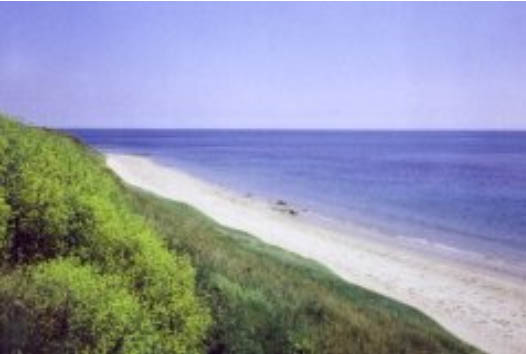| Rosslare - Ireland |
| Complete description
of case study |
PHOTO OF THE SITE
 |
|
CASE STUDY
| Title | Rosslare |
| National level | Ireland |
| Regional level | Wexford County |
| Local level | Rosslare |
ABSTRACT
|
The case study area is located in St. Georges Channel and consists of soft glacial cliffs at the southern end and sandy beaches at the northern end. The erosion at Rosslare Strand is mainly caused by human interference with the natural sediment movement patterns in Rosslare Bay, such as land reclamation and the construction of Rosslare harbour. The impact of erosion on socio-economic functions mainly consists of the impact on the available beach area and the infrastructure backing the beach. A breach in the coastal dunes can, in an extreme case, also cause the flooding of Wexford’s town and harbour area. The recommended strategy was the construction of rock groynes and the provision of additional beach nourishment as the best solution for preventing further erosion. Information on the effectiveness of the coastal protection scheme was only found for the first year after construction. In this short monitoring period, during the winter storm events a long shore bar was formed with sediment taken from the beach. Thus, the coastline receded. However, it was expected that during the summer the beach would be rebuilt again. The long-term effects of the nourishment and groyne construction cannot be determined from such a short monitoring period. |
BASIC INFORMATION
| Coastal characteristics |
|
| Policy options | Hold the line |
| Socio-economic activities | Nature conservation, tourism and recreation, industry, transport and energy |
| Engineering techniques | Historic: timber groins, breastworks, rock boulders, rock armour on dune face.Present: rock groins, beach nourishment. |
SOURCE
| Name | Paul
Sistermans Odelinde Nieuwenhuis |
| Institution | DHV group |
| Address | Laan
1914 nr.35, 3818 EX Amersfoort PO Box 219 3800 AE Amersfoort – The Netherlands |
| Telephone / fax | +31 (0)33 468 37 00 / +31 (0)33 468 37 48 |
| paul.sistermans@dhv.nl odelinde.nieuwenhuis@dhv.nl |